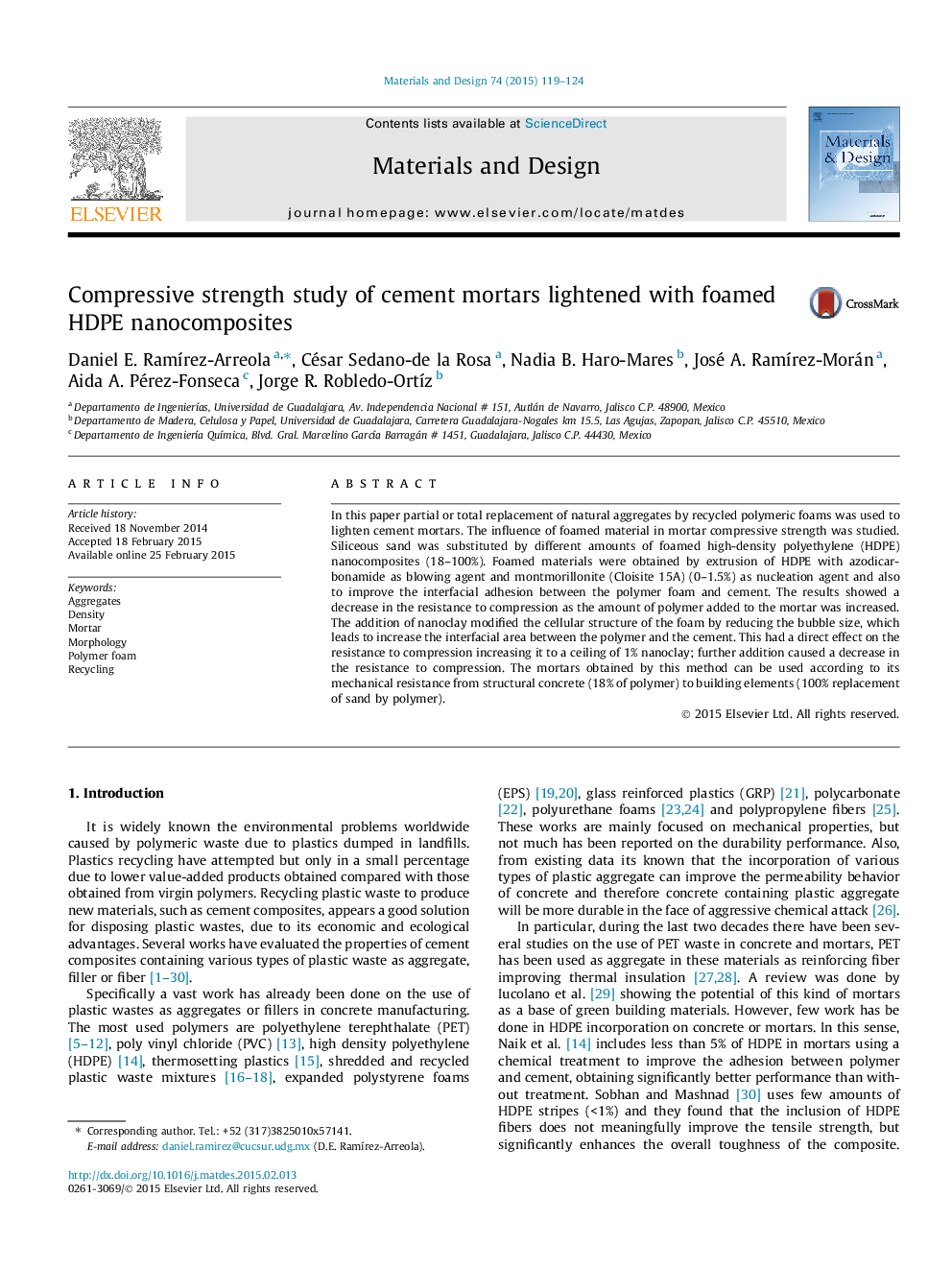| Article ID | Journal | Published Year | Pages | File Type |
|---|---|---|---|---|
| 828637 | Materials & Design (1980-2015) | 2015 | 6 Pages |
•Foams from plastic waste are a good component for cement mortars.•The nanoclay modified the cellular structure of the foams and it showed a coupling effect.•The produced mortars can be used from structural concrete to building elements.
In this paper partial or total replacement of natural aggregates by recycled polymeric foams was used to lighten cement mortars. The influence of foamed material in mortar compressive strength was studied. Siliceous sand was substituted by different amounts of foamed high-density polyethylene (HDPE) nanocomposites (18–100%). Foamed materials were obtained by extrusion of HDPE with azodicarbonamide as blowing agent and montmorillonite (Cloisite 15A) (0–1.5%) as nucleation agent and also to improve the interfacial adhesion between the polymer foam and cement. The results showed a decrease in the resistance to compression as the amount of polymer added to the mortar was increased. The addition of nanoclay modified the cellular structure of the foam by reducing the bubble size, which leads to increase the interfacial area between the polymer and the cement. This had a direct effect on the resistance to compression increasing it to a ceiling of 1% nanoclay; further addition caused a decrease in the resistance to compression. The mortars obtained by this method can be used according to its mechanical resistance from structural concrete (18% of polymer) to building elements (100% replacement of sand by polymer).
Graphical abstractFigure optionsDownload full-size imageDownload as PowerPoint slide
